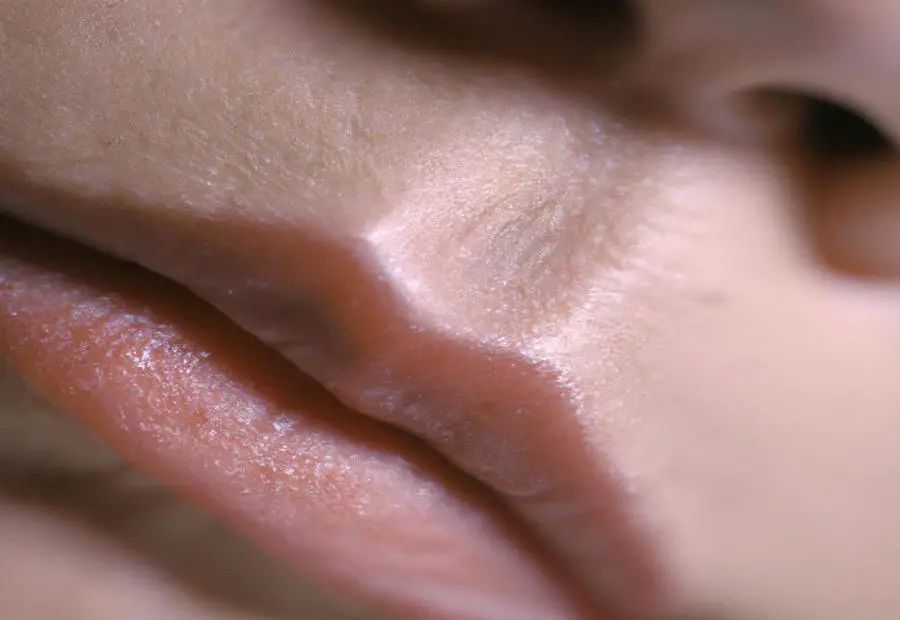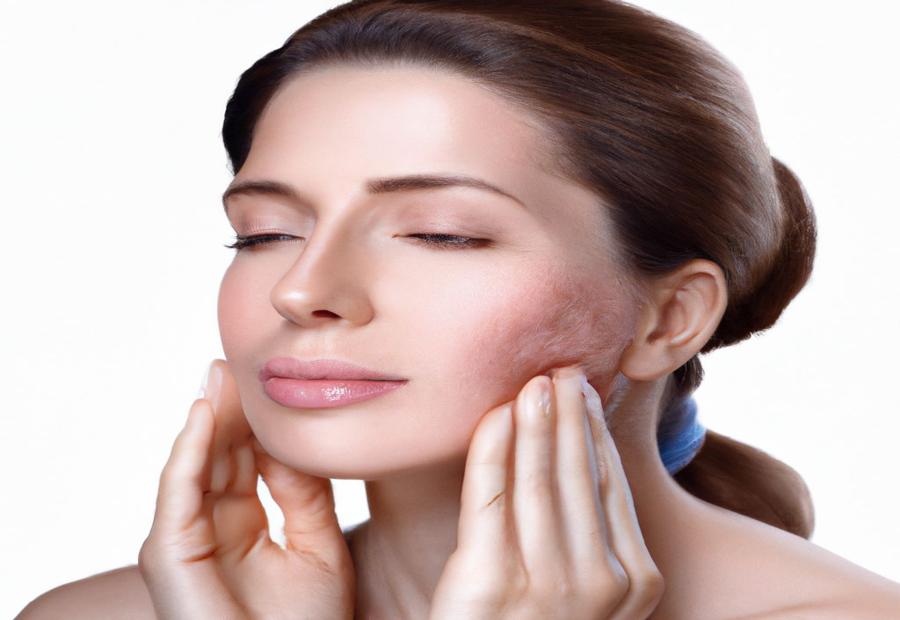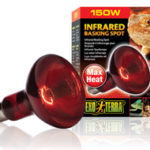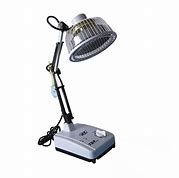Last Updated on 10 months by Francis
.jpg)
Both Hydrafacial and Microdermabrasion are popular non-invasive skincare treatments aimed at improving the overall appearance and health of the skin. Understanding the differences between these two procedures is essential in order to decide which treatment is right for you.
Hydrafacial is a multi-step facial treatment that combines cleansing, exfoliation, extraction, hydration, and antioxidant protection. It is designed to deeply cleanse and nourish the skin, addressing various skin concerns such as fine lines, wrinkles, hyperpigmentation, and uneven skin tone.
On the other hand, Microdermabrasion is a process that involves using a diamond-tipped wand or tiny crystals to exfoliate the outermost layer of the skin. This treatment helps to remove dead skin cells, smooth out rough texture, and stimulate collagen production, resulting in a brighter and more youthful complexion.
When comparing Hydrafacial and Microdermabrasion, factors such as the treatment process, skin concerns addressed, results, downtime, side effects, and cost should be considered. Each treatment has its own unique benefits and considerations. By evaluating these factors and consulting with a skincare professional, you can determine which treatment suits your specific skin needs and goals.
Contents
Key takeaway:
- Hydrafacial maximizes treatment effectiveness: Hydrafacial utilizes a multi-step process that deeply cleanses, exfoliates, and nourishes the skin. This comprehensive approach yields noticeable improvement in skin texture, tone, and hydration.
- Microdermabrasion promotes skin rejuvenation: Microdermabrasion involves exfoliating the outer layer of skin to reveal a smoother, more youthful complexion. It effectively addresses concerns like fine lines, sun damage, and mild scarring.
- Choosing the right treatment: Factors such as desired results, skin concerns, downtime, and cost should be considered when deciding between Hydrafacial and Microdermabrasion. Consulting with a skincare professional can help determine the best option for individual needs.
What is Hydrafacial?
Hydrafacial is a non-invasive facial treatment that combines deep cleansing, exfoliation, extraction, hydration, and antioxidant protection. It uses a specialized handheld device that delivers serums to the skin, targeting various skin concerns such as clogged pores, dullness, and fine lines.
What is Hydrafacial? The treatment is suitable for all skin types and can be customized to address specific skincare needs.
In a true story, Sarah struggled with acne-prone skin for years. She tried various treatments with limited success until she discovered Hydrafacial. After a series of sessions, her skin became noticeably clearer and smoother. The treatment helped minimize her acne breakouts and improve the overall texture and tone of her skin. Sarah continues to get regular Hydrafacial treatments to maintain her healthy and radiant complexion.
How Does Hydrafacial Work?
Hydrafacial is a non-invasive skincare treatment that combines exfoliation, deep cleansing, and extraction with hydration. How does Hydrafacial work? It works by using a handheld device with different attachments that deliver specific steps of the treatment.
The first step involves gently exfoliating the skin to remove dead skin cells and reveal a smoother complexion. After that, a gentle acid peel is applied to further remove impurities and unclog pores. How does Hydrafacial work? It continues with a vacuum-like suction that extracts debris, blackheads, and excess oil from the pores. This step deep cleanses the skin and improves its overall clarity.
To complete the treatment, a nourishing serum is infused into the skin, providing hydration and protection. This leaves the skin plump and radiant. The entire process takes around 30 to 45 minutes, and there is no downtime associated with the treatment. How does Hydrafacial work? It delivers immediate results, with the skin appearing cleaner, more hydrated, and rejuvenated.
Let’s hear Sarah’s experience with Hydrafacial. She had been struggling with acne for years and decided to try Hydrafacial after hearing positive reviews from friends. After a few sessions, she noticed a significant improvement in her skin. The Hydrafacial treatments deeply cleansed her pores and reduced the frequency of breakouts. Sarah’s skin became smoother and more radiant, boosting her confidence and making her feel more comfortable in her own skin. She continues to incorporate Hydrafacial into her skincare routine to maintain the results.
What Are the Benefits of Hydrafacial?
- What Are the Benefits of Hydrafacial?
- Improves skin hydration: Hydrafacial utilizes a patented Vortex Fusion technology to infuse nourishing serums into the skin, effectively hydrating and moisturizing it.
- Enhances skin tone and texture: Through the exfoliation of dead skin cells and extraction of impurities, Hydrafacial can enhance the overall tone and texture of the skin, resulting in a smoother and more even appearance.
- Reduces fine lines and wrinkles: By combining exfoliation and hydration, Hydrafacial aids in reducing the visibility of fine lines and wrinkles, granting the skin a more youthful look.
- Treats acne and clogged pores: Hydrafacial includes a thorough cleansing step that effectively unclogs pores and eliminates impurities, making it an effective treatment for acne, blackheads, and whiteheads.
- Improves skin elasticity: The hydration and nourishment provided by Hydrafacial stimulate collagen production, thereby enhancing the elasticity and firmness of the skin.
- Reduces hyperpigmentation: Targeting areas of hyperpigmentation, Hydrafacial helps to lighten and even out the skin tone, ultimately reducing the appearance of dark spots and discoloration.
- No downtime: Unlike certain other cosmetic treatments, Hydrafacial requires no downtime, enabling you to immediately resume your daily activities following the procedure.
What is Microdermabrasion?

Photo Credits: Infraredforhealth.Com by Joe Scott
Microdermabrasion is a non-invasive skincare treatment that exfoliates and rejuvenates the skin. What is Microdermabrasion? During the procedure, a handheld device is used to spray tiny crystals onto the skin’s surface, which gently remove the outer layer of dead skin cells. This process helps to improve skin texture, reduce the appearance of fine lines and wrinkles, and promote a more radiant complexion. Microdermabrasion is suitable for all skin types and can be done on the face, neck, and other parts of the body. It is a popular choice for individuals looking to achieve smoother, softer, and healthier-looking skin without the need for downtime or recovery.
How Does Microdermabrasion Work?
Microdermabrasion is a non-invasive skincare procedure that helps improve the texture and appearance of the skin. So, how does microdermabrasion work? It works by exfoliating the outermost layer of the skin, known as the stratum corneum, using a handheld device that sprays tiny crystals onto the skin. These crystals effectively remove dead skin cells, revealing a refreshed and rejuvenated complexion.
During the procedure, the esthetician or dermatologist gently moves the device over the treatment area in a sweeping motion. The tiny crystals, along with the dead skin cells, are then suctioned away by a vacuum attached to the device. This process stimulates collagen production and improves blood circulation, promoting a healthier and more even skin tone.
Microdermabrasion is particularly effective in reducing the appearance of acne scars, fine lines, sun damage, and uneven skin texture. It is also beneficial for people with clogged pores or dull skin as it unclogs pores and enhances skin radiance.
It is important to note that microdermabrasion is a cosmetic procedure and should not be used to treat certain skin conditions or deeper wrinkles. To determine if microdermabrasion is suitable for your specific skin concerns, it is always recommended to consult with a skincare professional.
After undergoing a microdermabrasion treatment, it is crucial to apply sunscreen and moisturizer to protect and hydrate the newly exfoliated skin. By incorporating regular treatments into your skincare routine, you can maintain the results and keep your skin looking its best.
What Are the Benefits of Microdermabrasion?
What Are the Benefits of Microdermabrasion?
- Exfoliation: Microdermabrasion offers the advantage of exfoliating the skin to remove dead skin cells, revealing a smoother and brighter complexion.
- Improves skin texture: By exfoliating the outer layer of the skin, microdermabrasion helps improve the texture of the skin, reducing the appearance of fine lines, wrinkles, and acne scars.
- Reduces hyperpigmentation: Microdermabrasion can effectively reduce the appearance of hyperpigmentation, such as age spots and sun damage, by exfoliating the affected areas.
- Enhances skincare product absorption: With the outer layer of dead skin cells removed, microdermabrasion allows for better absorption of skincare products, making them more effective.
- Stimulates collagen production: Microdermabrasion stimulates collagen production in the skin, enhancing skin elasticity and firmness.
- Reduces clogged pores: By exfoliating the skin, microdermabrasion helps unclog pores, reducing the risk of acne breakouts.
- Improves overall skin health: Regular microdermabrasion treatments can promote cell turnover and rejuvenation, improving the overall health and appearance of the skin.
Comparison: Hydrafacial vs. Microdermabrasion
In the world of skincare treatments, Hydrafacial and Microdermabrasion stand out as popular options. But how do they compare? We’ll dive into the details of each treatment to uncover which one suits your needs. From the treatment process to the results and longevity, we’ll explore the differences in addressing various skin concerns. Let’s not forget about the downtime and potential side effects, as well as the cost associated with these procedures. So, let’s get ready for a head-to-head comparison!
1. Treatment Process
|
Treatment Process |
|
|
Hydrafacial |
Microdermabrasion |
|
Hydrafacial is a treatment process that involves a multi-step process that starts with cleansing and exfoliation to remove dead skin cells. Then, a serum is applied to nourish and hydrate the skin. Next, a vacuum-powered extraction is done to remove dirt and impurities. Finally, an antioxidant serum and moisturizer are applied to protect and rejuvenate the skin. |
Microdermabrasion is a treatment process that uses a handheld device to exfoliate the outer layer of the skin. It works by spraying tiny crystals onto the skin and then using suction to remove the crystals along with the dead skin cells. This process helps improve skin texture and reduces the appearance of fine lines and wrinkles. |
2. Skin Concerns Addressed
-
Acne: Hydrafacial and microdermabrasion are both effective in addressing acne-prone skin. They can effectively remove excess oil and unclog pores, resulting in a decrease in breakouts.
-
Fine lines and wrinkles: Both treatments are capable of minimizing the appearance of fine lines and wrinkles. By exfoliating the skin and stimulating collagen production, they can help achieve a more youthful look.
-
Hyperpigmentation: If you are dealing with hyperpigmentation issues like sunspots or age spots, both Hydrafacial and microdermabrasion can target and treat these areas. They work towards evening out the skin tone and creating a more uniform complexion.
-
Uneven texture: Whether you have roughness or an uneven skin texture, both treatments can greatly assist in improving it. They work by eliminating dead skin cells, revealing a smoother and softer skin surface.
-
Enlarged pores: Hydrafacial and microdermabrasion are also effective in addressing enlarged pores. By providing deep cleansing and minimizing the appearance of pores, they help achieve a smoother skin surface.
Fact: To determine the most suitable treatment for your specific skin concerns, it is crucial to consult with a skincare professional. They will assess your skin thoroughly and recommend the most appropriate option for optimal results.
3. Results and Longevity
| Hydrafacial | Microdermabrasion |
| Results | Results |
| Hydrafacial provides immediate results after a single treatment. | Microdermabrasion also offers immediate results, with noticeable improvements in skin texture and tone. |
| The skin appears more hydrated, plump, and radiant. | Skin looks smoother, brighter, and rejuvenated. |
| Longevity | Longevity |
| To maintain optimal results, regular Hydrafacial treatments every 4-6 weeks are recommended. | Microdermabrasion results typically last for 4-6 weeks, requiring regular sessions to maintain the improvements. |
| Individual results may vary, depending on skin type and lifestyle factors. | The longevity of results can vary based on individual factors. |
4. Downtime and Side Effects
When comparing the downtime and side effects between Hydrafacial and Microdermabrasion, there are a few key differences to consider:
- Recovery time: Hydrafacial typically has no downtime, allowing you to resume your daily activities immediately after the treatment. On the other hand, Microdermabrasion may result in mild redness and irritation, which usually subsides within a few hours to a day.
- Sensitivity: Hydrafacial is known for being gentle on the skin, making it suitable for sensitive skin types. Microdermabrasion, while generally well-tolerated, may cause temporary sensitivity or discomfort during the procedure.
- Side effects: Hydrafacial rarely has any adverse side effects and is considered a safe and non-invasive treatment. Microdermabrasion may occasionally lead to minor side effects such as bruising, peeling, or dryness, especially if the treatment is aggressive or not performed correctly.
- Treatment frequency: Hydrafacial can be performed as often as once a month for optimal results, with no cumulative side effects. Microdermabrasion, on the other hand, may require longer intervals between treatments to allow the skin to fully recover, especially if more aggressive exfoliation is performed.
- Customization: Hydrafacial can be tailored to address specific skin concerns and can be combined with other treatments to enhance results. Microdermabrasion is primarily focused on exfoliation and may be less customizable for specific skin concerns.
Considering these factors, it is important to consult with a skincare professional to determine which treatment option is best suited for your individual needs and skin condition.
5. Cost
The cost is a crucial aspect to take into account when deciding between Hydrafacial and Microdermabrasion treatments for your skin.
- Hydrafacial: The cost of a Hydrafacial treatment typically ranges from $150 to $300 per session, depending on the location and the specific provider. Some places may offer package deals or discounts for multiple sessions, which can help reduce the overall cost.
- Microdermabrasion: Microdermabrasion treatments are generally more affordable compared to Hydrafacial. The average cost of a single session of Microdermabrasion is around $75 to $200. Similarly, package deals or discounts may be available for multiple sessions.
When considering the cost, it is essential to factor in the number of sessions needed to achieve the desired results. Hydrafacial typically requires more frequent sessions, often scheduled monthly, to maintain the benefits. In contrast, Microdermabrasion may have slightly longer gaps between sessions, so the overall cost can vary based on your skin’s needs and goals.
Ultimately, the specific costs may vary depending on your location, the expertise of the provider, and any additional add-ons or treatments you choose to include. It’s important to consult with a qualified skincare professional to determine the best treatment option for your specific concerns and budget.
Remember, the cost should not be the sole determining factor when choosing between Hydrafacial and Microdermabrasion. Consider your skin’s needs, desired results, and any specific concerns or limitations to make an informed decision.
Which Treatment Is Right for You?

Photo Credits: Infraredforhealth.Com by Jordan Perez
When it comes to rejuvenating your skin, the choice between Hydrafacial and Microdermabrasion can be a tough one. So, what factors should you keep in mind before making a decision? In this section, we’ll dive into the key considerations that can help you choose the right treatment for your specific needs. No fluff, just the essential details to guide you towards the best path for achieving radiant, glowing skin. Let’s explore the factors that will shape your decision-making process!
Factors to Consider When Choosing Between Hydrafacial and Microdermabrasion
The factors to consider when choosing between Hydrafacial and Microdermabrasion are skin concerns addressed, treatment process, results and longevity, downtime and side effects, and cost.
- Skin concerns addressed: Both Hydrafacial and Microdermabrasion can address a range of skin concerns such as fine lines and wrinkles, uneven skin tone, acne, and hyperpigmentation. However, Hydrafacial is particularly effective for hydration and deep cleansing, while Microdermabrasion is more focused on exfoliation and texture improvement.
- Treatment process: Hydrafacial involves a multi-step treatment that includes cleansing, exfoliation, extraction, and hydration using serums. On the other hand, Microdermabrasion uses a handheld device to exfoliate the outer layer of the skin using fine crystals or a diamond tip.
- Results and longevity: Hydrafacial provides immediate and visible results, with improvements in skin texture, tone, and hydration. The results can last for a few weeks. Microdermabrasion also offers noticeable improvements in skin texture and tone, but multiple sessions are usually recommended for optimal results.
- Downtime and side effects: Hydrafacial has minimal downtime, with no major side effects. Some individuals may experience slight redness or sensitivity, but it typically resolves quickly. Microdermabrasion may cause mild redness and temporary sensitivity, with a short downtime of a day or two.
- Cost: The cost of Hydrafacial ranges from $150 to $300 per session, depending on the location and additional treatments. Microdermabrasion is generally more affordable, with prices ranging from $75 to $200 per session.
When choosing between Hydrafacial and Microdermabrasion, it is important to consider the following factors:
- Skin concerns addressed: Both treatments can effectively address skin concerns such as fine lines and wrinkles, uneven skin tone, acne, and hyperpigmentation. Hydrafacial is particularly beneficial for hydration and deep cleansing, while Microdermabrasion is more focused on exfoliation and improving skin texture.
- Treatment process: Hydrafacial involves a multi-step process that includes cleansing, exfoliation, extraction, and hydration using serums. On the other hand, Microdermabrasion uses a handheld device with fine crystals or a diamond tip to exfoliate the outer layer of the skin.
- Results and longevity: Hydrafacial provides immediate and visible results, improving skin texture, tone, and hydration. These results can last for a few weeks. Microdermabrasion also offers noticeable improvements in skin texture and tone, but multiple sessions are usually recommended for optimal results.
- Downtime and side effects: Hydrafacial has minimal downtime and no major side effects. Some individuals may experience slight redness or sensitivity, but it typically resolves quickly. Microdermabrasion may cause mild redness and temporary sensitivity, with a short downtime of one to two days.
- Cost: Hydrafacial sessions range from $150 to $300, depending on location and additional treatments. On the other hand, Microdermabrasion is generally more affordable, with prices ranging from $75 to $200 per session.
Some Facts About Hydrafacial Vs Microdermabrasion:
- ✅ Hydrafacial is a facial treatment that combines different technologies and procedures to provide hydration and improve the appearance of fine lines and wrinkles.
- ✅ There are over 1000 different pattern combinations on an Android tablet.
- ✅ The Google Play store offers over 20 different apps for removing pattern lock on Android tablets.
- ✅ 30% of tablet users prefer pattern lock over other security measures.
- ✅ Microdermabrasion uses crystals or a diamond tip to buff away the skin’s surface and remove dead cells.
Frequently Asked Questions
What is the difference between HydraFacial and microdermabrasion?
HydraFacial is a facial treatment that combines different technologies and procedures to provide hydration and improve the appearance of fine lines and wrinkles. It uses high-powered pulsating jets of air, water, and microdermabrasion crystals to exfoliate the skin. Microdermabrasion, on the other hand, uses tiny crystals to gently exfoliate the top layer of the skin.
Which treatment is best for me, HydraFacial or microdermabrasion?
The choice between HydraFacial and microdermabrasion depends on your specific skin concerns and desired results. HydraFacial is more versatile and can be adjusted to different skin types, making it a safer option for individuals with acne, rosacea, or thin, aging skin. On the other hand, microdermabrasion may be more suitable for those looking to specifically target hyperpigmentation.
What are the benefits of HydraFacial?
HydraFacial offers multiple benefits, including improved hydration, reduction in the appearance of fine lines and wrinkles, and the ability to target specific skin conditions such as acne scars and blackheads. It is a non-surgical treatment that is safe for all skin types and leaves the skin looking fresher, plumper, and more luminous.
Does microdermabrasion cause any side effects?
Microdermabrasion can cause temporary side effects such as tenderness, redness, swelling, and in some cases, broken capillaries or acne. It is important to consult with a skincare professional to determine if microdermabrasion is suitable for your specific skin type and concerns.
How long does a HydraFacial treatment take?
HydraFacial treatments typically take less than 10 minutes to complete, making it a convenient option for individuals with busy schedules. The treatment also has minimal downtime, allowing you to resume normal activities immediately afterwards.
What are the key ingredients used in HydraFacial?
HydraFacial uses a range of ingredients to enhance the results of the treatment, including antioxidants, peptides, and hyaluronic acid. These ingredients work together to nourish and hydrate the skin, leaving it looking healthier and more radiant.

.jpg)
.jpg)
.jpg)
.jpg)



